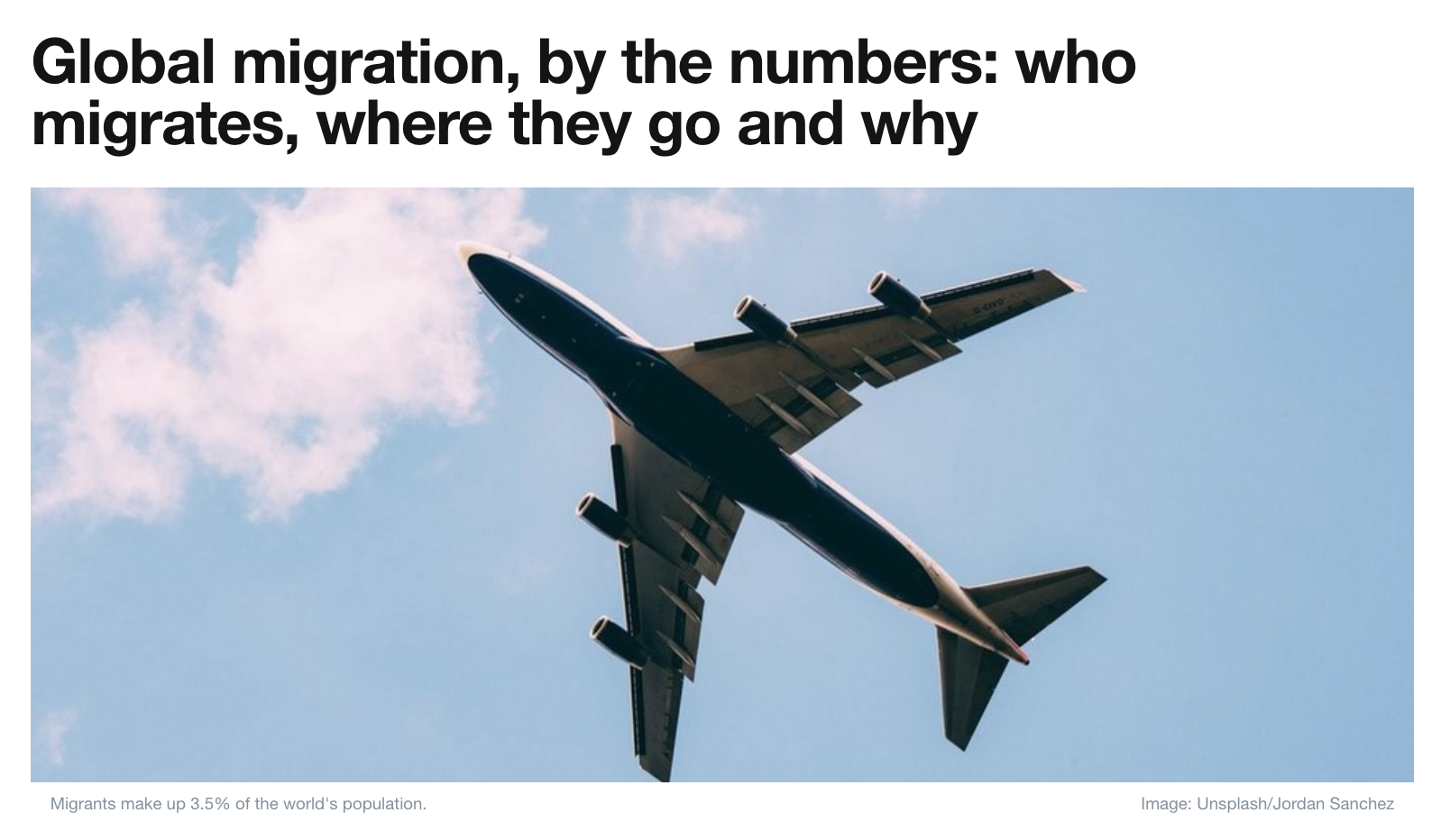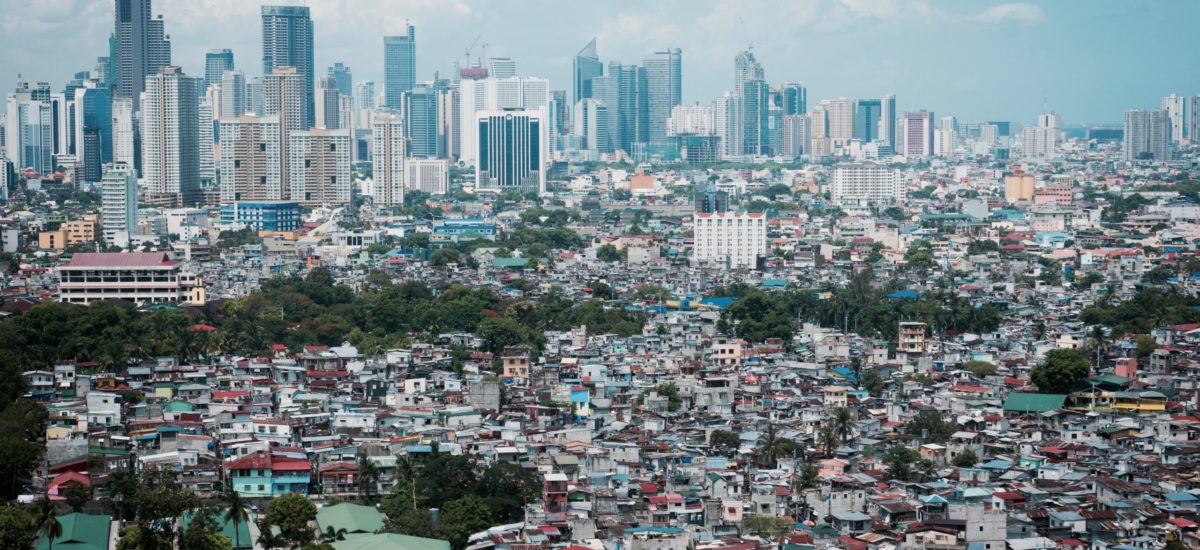







Types of Migration
Describe the types of human mobility
Types of Migration
Describe the types of human mobility
TASK 1: Draw a simple family tree indicating where you, your parents and grandparents are from
Were you, your parents or grandparents born in a different country to the one you live in/come from? Draw a simple family tree explaining your origins and historic migration within your family.
Migration is a subject that we are all a part of. Prepare to share your family history and examples of migration with the class.
Photo by humberto chavez on Unsplash
WHAT IS MIGRATION?
TASK 2: Watch the video and note the different types of migration mentioned in the video. Add examples of causes and effects to your notes. Prepare to share this with the class.
TYPES OF MIGRATION
TASK 3: Practise your knowledge and understanding of the key terms below by selecting the “flashcard” and “learn” options on the Quizlet.
TASK 4: Global distribution of migrants
Examine the infographic
With reference to data, describe the global distribution of international migrants
Global perspectiveS ON migration
TASK 5: Read the article and answer the comprehension questions below.
Reading Comprehension Quiz: International Migration
What is the estimated number of international migrants in the world, and what percentage does this represent of the global population?
According to the International Organization for Migration (IOM), how do they define migration?
How has the number of people living in a country other than where they were born changed since 1970?
What are some factors that make it difficult to predict the scale and speed of migration?
What is the primary reason why most migrants leave their home countries?
Which countries are the primary sources of international migrants, and how many former residents do they have around the world?
What is the primary destination for migrants, and which country has the largest migrant contingent in relation to its population?
In which countries has migration been a key contributor to population change, and how has this changed in recent years?
According to the article, which nation has been the biggest host for refugees for the fifth consecutive year?
What are some statistics regarding the dangers migrants face during their journeys, including the deadliest migration routes mentioned in the article?
WHAT ARE THE DIFFERENT TYPES OF MIGRATION?
Make your own version of the concept map below.

Voluntary & Involuntary Migration
Describe and suggest reasons for voluntary and involuntary international population migrations.
Voluntary & Involuntary Migration
Describe and suggest reasons for voluntary and involuntary international population migrations.
Migrations are either internal (within the country) or international (from one country to another).
They can be further classified as voluntary (where the individual decides to move) or involuntary (where there is little choice but to move).
HISTORIC EXAMPLES OF MIGRATION
TASK 1: Classify each of the examples below as:
Internal (I) or External (E)
Voluntary (V) or Forced (F)
TASK 2:
Add 2 migrations to the map and colour the source and destination countries. Name the countries.
Research these migrations and annotate the map with information about causes and impacts
involuntary (forced) migration
case study rwanda 1994
TASK 3: Access the resources below and create a case study summary of the Rwanda forced migration example
documentary: rwanda's untold story

Impacts of Migration
Describe positive and negative impacts on the destination and origin of migrants, as well as on the migrants themselves
Impacts of Migration
Describe positive and negative impacts on the destination and origin of migrants, as well as on the migrants themselves
MIGRATION CASE STUDIES
Explore the causes and consequences of different examples of migration and prepare to present one of these to the class. You should focus on providing an overview of the example, the type of migration and its social, economic, environmental and political (SEEP) causes and effects.

Case Study: International Migration
Positive and negative impacts on the destination and origin of the migrants, and on the migrants themselves
Case Study: International Migration
Positive and negative impacts on the destination and origin of the migrants, and on the migrants themselves

Migration in Switzerland
Migration in Switzerland
TASK ONE: With reference to data, describe the changes to permanent foreign residents between 1900 and 2016.
Permanent foreign residents in Switzerland as a percentage of the total population, 1900-2016
TASK TWO: Overview of Swiss Migration
Watch the video and create a fact file listing the statistics relating to migration in Switzerland.
TASK THREE: TRENDS IN SWISS IMMIGRATION
Read the article and write one paragraph summarising the story, including data.
TASK FOUR: MIGRATION ENQUIRY
Access each of the links below and read the information. Take screenshots of data showing patterns and trends in migration data and import these into a document. Comment on the data and what it shows.
TASK FIVE: INTERACTIVE STATISTICAL ATLAS
The map below shows the net migration rate for cantons within Switzerland. Red indicates more people arriving in the canton than leaving. Blue indicates more people leaving the canton than arriving.
With reference to data, describe the pattern of net migration in Switzerland

Rural-Urban Migration
Explain reasons for internal, rural-urban population migrations.
Rural-Urban Migration
Explain reasons for internal, rural-urban population migrations.
In some parts of the world, many people are moving from the countryside to cities. List 3 push and 3 pull factors.
rural: relating to, or characteristic of, countryside and villages.
urban: relating to, or characteristic of, towns and cities.
RURAL-URBAN INTERNAL MIGRATION IN CHINA
Describe the pattern of internal migration shown on the map. (3 marks)
Watch the video below and list the causes and consequences of rural-urban migration in China for countryside and city areas
COUNTER-URBANISATION
Counter-urbanisation, or de-urbanisation, is a demographic and social process whereby people move from urban areas to rural areas. It is, like suburbanisation, inversely related to urbanisation. It first occurred as a reaction to inner-city deprivation. More recent research has documented the social and political drivers of counter-urbanisation and its impacts in developing countries such as China, which are currently undergoing the process of mass urbanisation. It is one of the causes that can lead to shrinking cities. (Source)

Rural Depopulation
Describe physical, economic and social causes of rural depopulation and the movement of people to major cities
Rural Depopulation
Describe physical, economic and social causes of rural depopulation and the movement of people to major cities
In groups, make a mind map of the many different reasons why people choose to move to cities. Categorise these into push and pull factors, then physical, economic and social
URBANISATION, RURAL-URBAN MIGRATION AND RURAL DEPOPULATION
Rural-urban migration is both a socioeconomic phenomenon and a spatial process involving the movement of people from rural areas into cities, either permanently or semipermanently.
At present, it occurs mainly in developing countries as they undergo rapid urbanisation. Job opportunities created by industrialisation attract the surplus rural labor to the cities to seek higher salaries through employment in the industrial sector.
Rural-urban migration is widely considered an inevitable component of the development process, though it has a broad range of consequences and implications.
Wisconsin, USA
China
TASK
Define:
Urbanisation
Rural-urban migration
Rural depopulation
Write a short paragraph explaining how these processes are interconnected
Watch and read the resources above. Note down causes and effects of rural depopulation.
In groups, develop a plan to reduce rural depopulation and present your ideas to the class.
















